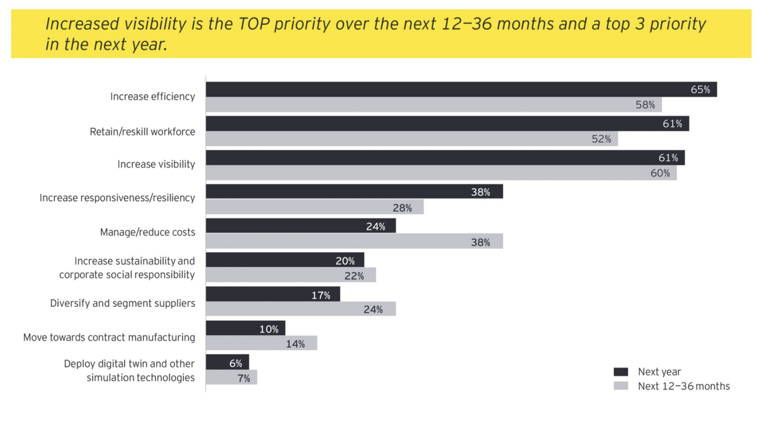COVID-19 has posed significant challenges for supply chains globally with lockdowns disrupting the production and flow of raw materials and finished goods the world over.
But is this a new problem or did it just expose vulnerabilities that existed in the supply chain already?
The answer may lie, partly, in the evolution of the outsourced logistics industry.
The last few decades have seen the rise of third-party logistics as organisations looked to eliminate complexity and risk in order to focus on their core business.
It became logical for companies to outsource their logistics given it provided the ability to scale up and down quickly and cost-effectively. It also became someone else’s problem to manage efficiently.
What started out as a simple outsourced transportation model has since evolved into a specialty third-party supply chain industry now worth over USD$919 billion globally and predicted to hit US$1710 billion by 2027.
Everything from warehousing and fulfilment through to shipping, line haul to end-to-end delivery is now managed by third party providers.
The outsourcing mega-trend has allowed companies to scale and globalise their manufacturing without huge investment by leveraging off-shore production.
Outsourcing has also enabled just in time logistics, drop shipping and innovations such as fast fashion.
The rapid adoption of third-party logistics has also seen significant consolidation of providers within the industry and a move from local capacity to the development of regional, national and globally significant organisations with previously unheard of capability and levels of performance.
Whilst this has meant significant growth for organisations, given they have access to more resources and efficiencies, outsourcing has created more complexities and less visibility of the supply chain given the different systems, sub-contractors, customers and contracts involved.
Prior to Covid, many organisations weren’t required to invest in supply chain visibility, relying instead on the increasing sophistication of the global logistics providers. A super- competitive logistics industry, with excess capacity, competed by providing customers with frequent, fast and reliable performance undertakings.
The production and supply chain disruptions have blown these undertakings right out of the water, with most industries facing a perfect storm of soaring demand, manufacturing challenges and, previously dependable, supply chains becoming anything but.
Without reliable performance undertakings, supply chain management has become disorderly and time consuming. All aspects of the supply chain are now susceptible to change from the actual product orders, where they’re produced or despatched from, through to the availability of containers and transport capacity. Even once underway, transport legs are subject to unprecedented changes and disruptions.
A pre-Covid supply chain visibility project business case would have expected to deliver optimisation benefits. Post Covid, many of these projects have less sophisticated aspirations of simply knowing what product has been produced, where it is and the latest estimate of delivery. A single version of the truth.
The reality is, Covid simply exposed the true extent of the lack of visibility that existed between organisations and their outsourced logistics providers.
An Ernst and Young survey of senior supply chain executives in 2019 highlighted visibility as a major issue pre-Covid and the number one priority to address.
In late 2020, the same Ernst and Young annual survey found that while the pandemic brought to light some previously unseen issues, it accelerated and magnified problems that already existed in the supply chain.
While increasing efficiency was seen as the top priority in 2021, improving visibility was clearly highlighted as still their number one priority for the next three years.
The survey also revealed that the severe disruption is driving organisations to invest in more technology to shake up their supply chain strategies and become more resilient, collaborative and networked with customers, suppliers and other stakeholders.

Quite simply, visibility can be achieved using technology as a conduit. That involves creating a ‘digital supply chain visibility engine’ that connects all providers’ systems together.
The engine then pulls all data/events from each of the individual systems together into a central place and makes sense of it all in a consistent language. This provides a clear view of the wider supply chain in real-time and also provides context to individual operators and supply chains that sit within it.
The supply chain visibility engine can quickly make sense of the data which can then be repurposed for:
Organisations have three options when it comes to achieving better visibility of their supply chain;
With visibility being a key priority for organisations moving forward, outsourced supply chain providers now need to provide true visibility and accountability of their operations. Technology can help provide valuable context of their role in the wider supply chain to ensure they remain, or become, a vendor of choice to new and existing clients.
Learn exactly what is involved in our 'Untold guide to implementing supply chain visibility software'
Origin specialises in helping organisations connect supply chain data from all of their systems, and that of third parties, together to create meaningful context.
The Origin team follows a proven methodology to define and configure supply chains and maps all available information and interchanges to create an ‘up-to-the-second’ visualisation of performance.
If you want a logistics system that is supply chain ready, talk to us.
© Copyright 2025, Sandfield Associates Limited. All Rights Reserved. Privacy Policy